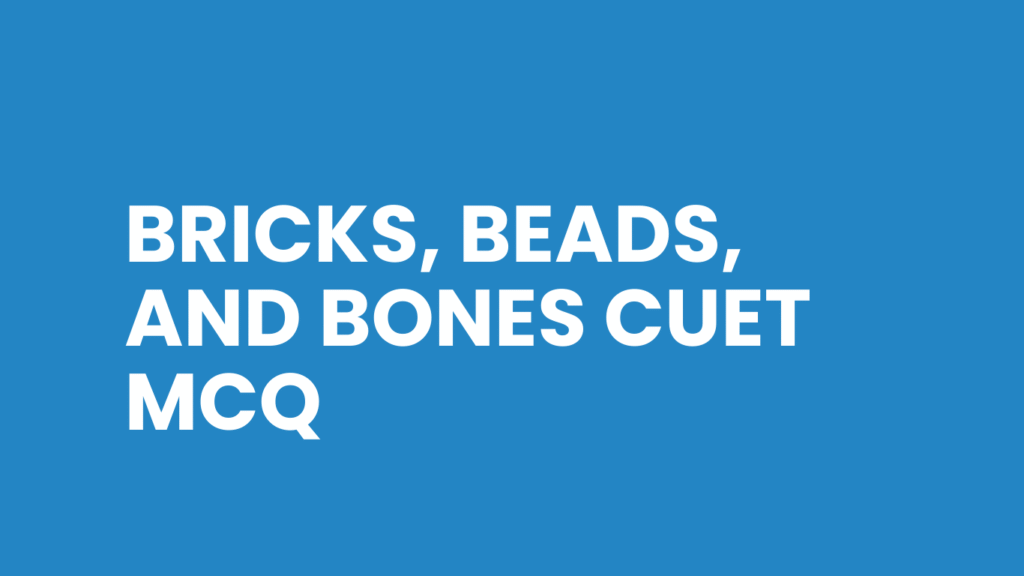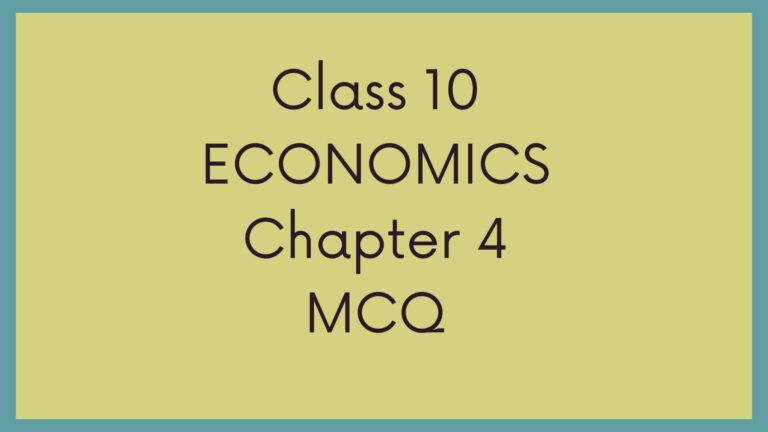Bricks, Beads, and Bones CUET MCQ | Class 12 History Chapter 1 Most Important MCQ for CUET 2026
This article will provide you with Bricks, Beads, and Bones CUET MCQ. lass 12 History Chapter 1 Most Important MCQ for CUET 2026 can help you prepare for CUET 2026 in a better and effective way. You can use this MCQ to
revise your basic concepts and get the in-depth details of the chapter. Use this class 12 History Chapter 1 Most Important MCQ for CUET 2026 so that you can score the best marks in your CUET 2026 exams. Also you can get the explanation of it all on our YouTube channel.

Bricks, Beads, and Bones CUET MCQ
- Which of the following is the most unique feature of the Harappan cities?
a) Use of stone temples
b) Grid-pattern town planning
c) Large open courtyards
d) Step wells - Which material was mainly used to make Harappan bricks?
a) Sun-dried bricks
b) Stone blocks
c) Burnt bricks
d) Marble - The Great Bath of Mohenjodaro is considered to be related to:
a) Political meetings
b) Trade and commerce
c) Ritual bathing
d) Storage of grain - Which Harappan site is known as the “Manchester of Indus Valley”?
a) Harappa
b) Mohenjodaro
c) Lothal
d) Chanhudaro - Which site has the largest Harappan inscription discovered so far?
a) Harappa
b) Dholavira
c) Kalibangan
d) Banawali - Which Harappan site provides the earliest evidence of ploughed fields?
a) Kalibangan
b) Harappa
c) Dholavira
d) Chanhudaro - The Harappans used which of the following metals but NOT ______ ?
a) Copper
b) Bronze
c) Gold
d) Iron - Which type of irrigation method was likely used in Harappan times?
a) Step wells
b) Canal irrigation
c) Tank irrigation
d) None, only rainfall - The Harappans procured lapis lazuli mainly from:
a) Rajasthan
b) Baluchistan
c) Afghanistan (Badakhshan)
d) Gujarat - Which craft was Chanhudaro famous for?
a) Bead-making
b) Copper-smelting
c) Terracotta toys
d) Pottery - The dockyard related to Harappan trade has been found at:
a) Lothal
b) Dholavira
c) Kalibangan
d) Mohenjodaro - Mesopotamian texts refer to trade with Harappans as:
a) Meluhha
b) Magan
c) Dilmun
d) Sumer - Which of the following animal remains is NOT found in Harappan sites?
a) Cattle
b) Horse
c) Sheep
d) Buffalo - The script of the Harappans is:
a) Deciphered fully
b) Pictographic and undeciphered
c) Alphabetical
d) Based on Devanagari - Which Harappan figure is often linked to a proto-form of Lord Shiva?
a) Priest-King
b) Mother Goddess
c) Pashupati Seal
d) Dancing Girl - The decline of the Harappan civilisation is often linked to:
a) Overuse of iron
b) Ecological changes and floods
c) Invasion by the Huns
d) Growth of Mauryan empire - Which site shows evidence of water reservoirs and advanced water management?
a) Lothal
b) Kalibangan
c) Dholavira
d) Harappa - Which of the following statements is correct about Harappan weights and measures?
a) They were based on binary system (2, 4, 8…)
b) They were based on decimal system (16, 64, 160…)
c) They were irregular
d) They used paper records - The famous “Dancing Girl” bronze statue was found at:
a) Harappa
b) Mohenjodaro
c) Dholavira
d) Lothal - The Harappan civilisation belonged to which age?
a) Iron Age
b) Chalcolithic Age
c) Stone Age
d) Mesolithic Age - Which Harappan site provides evidence of fire altars?
a) Dholavira
b) Kalibangan
c) Chanhudaro
d) Harappa - Which material was used to make Harappan seals?
a) Copper
b) Steatite
c) Ivory
d) Gold - Evidence of rice cultivation in Harappan sites has been found at:
a) Lothal
b) Harappa
c) Kalibangan
d) Rangpur - The standard length used by Harappans for town planning was based on:
a) Wooden sticks
b) Ivory scale
c) Bronze rod
d) Cubical weights - Which Harappan site is considered a centre of shell-working?
a) Harappa
b) Mohenjodaro
c) Nageshwar
d) Banawali - Which structure indicates that Harappans were familiar with granary storage?
a) Great Bath
b) Warehouse at Harappa
c) Dockyard at Lothal
d) Fire altars at Kalibangan - Which Harappan site is located in present-day Pakistan’s Sindh region?
a) Mohenjodaro
b) Kalibangan
c) Banawali
d) Rakhigarhi - The famous “Priest-King” sculpture was found at:
a) Harappa
b) Mohenjodaro
c) Dholavira
d) Chanhudaro - Which site provides evidence of both citadel and lower town divided by a wall?
a) Dholavira
b) Harappa
c) Kalibangan
d) Mohenjodaro - Which of the following was NOT a characteristic of Harappan religion?
a) Worship of Mother Goddess
b) Worship of fire
c) Construction of large temples
d) Worship of Pashupati
Answer key for Bricks, Beads, and Bones CUET MCQ
1-b, 2-c, 3-c, 4-d, 5-b, 6-a, 7-d, 8-b, 9-c, 10-a, 11-a, 12-a, 13-b, 14-b, 15-c, 16-b, 17-c, 18-b, 19-b, 20-b, 21-b, 22-b, 23-d, 24-c, 25-c, 26-b, 27-a, 28-b, 29-a, 30-c





